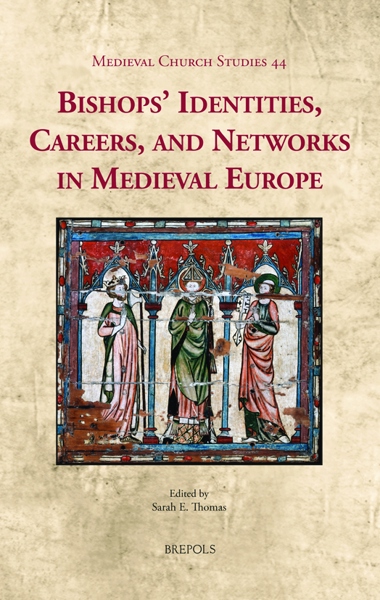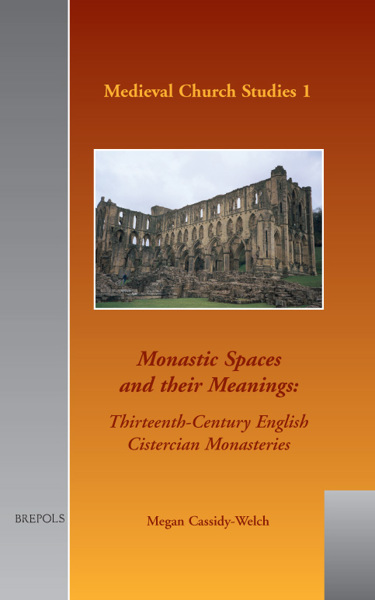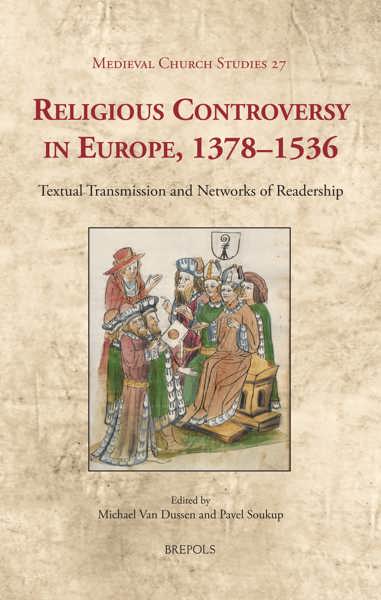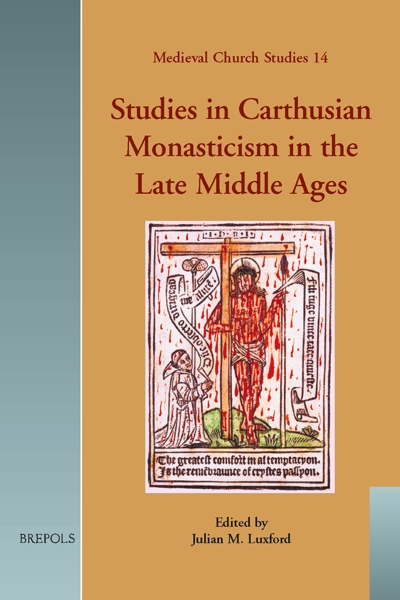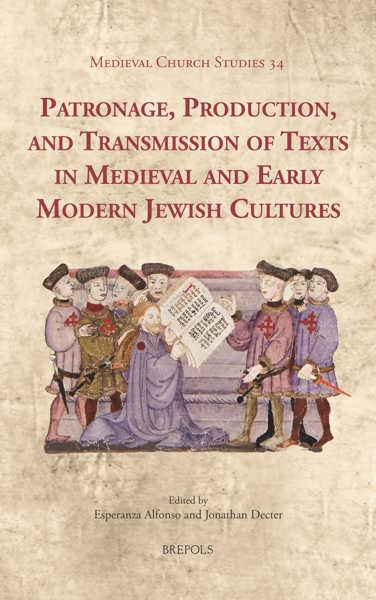
Bishops’ Identities, Careers, and Networks in Medieval Europe
Sarah Thomas (ed)
- Pages: ix + 312 p.
- Size:156 x 234 mm
- Illustrations:6 b/w, 10 tables b/w., 3 maps b/w
- Language(s):English
- Publication Year:2021
- € 85,00 EXCL. VAT RETAIL PRICE
- ISBN: 978-2-503-57910-8
- Hardback
- Available
- € 85,00 EXCL. VAT RETAIL PRICE
- ISBN: 978-2-503-57911-5
- E-book
- Available
Examines the identities and networks of bishops in medieval Europe.
"son mérite vise (...) à décloisonner les historiographiques très nationales et à faire communiquer les acquis de chaque aire géographique pour l'ensemble du sujet." (Bénédicte Sère, in SEHEPUNKTE, 1.22, 2022)
“Overall, this is an impressive volume that advances our understanding of episcopal matters in medieval Europe. The geographical and temporal range of the volume is welcome, and the studies presented here are of excellent quality, readability, and value. (…) this volume is a triumph and will serve scholars very well.” (Craig M Nakashian, in The Medieval Review, 7/11/2022)
“(…) this is an eminently readable collection that demonstrates the importance of connections for any medieval cleric seeking high office.” (Kyly Walker, in Parergon, 39/2, 2022, p. 173)
« In conclusione, il volume curato da Sarah Thomas rappresenta nell’insieme un importante contributo a un tema, quello della storia dell’istituzione vescovile, che necessita di un rinnovato interesse storio[1]grafico, soprattutto tenendo conto degli approcci e delle metodologie che la ricerca ha messo a punto negli ultimi decenni. » (Alberto Spataro, in Quellen und Forschungen aus italienischen Archiven und Bibliotheken, 103, 2023, p. 591-92)
“The reader will find in this volume a rich discussion of interrelated themes, with fresh perspectives on this important group of churchmen in their diverse contexts.” (JANET BURTON, in Journal of Ecclesiastical History, 73, 2022, p. 639)
"The volume thus introduces a wealth of new scholarship, sources, and topics to an English-speak>ing audience. The bibliographies which follow each essay are veritable launching pads for scholars keen to venture into new regions of medieval Europe." (Ryan Kemp, in Rheinische Vierteljahrsblätter, 88, 2024, 261)
Dr Sarah E. Thomas was the principal investigator on the AHRC project ‘A Prosopographical Study of Bishops’ Careers in Northern Europe’. Her research focuses on the interaction of the late medieval Church with ordinary people and on the identities of the individuals who served as priests and bishops. She is currently writing up her research from the Bishops’ project into a monograph provisionally titled Becoming a Bishop in Late Medieval Scotland, England, and Norway.
Bishops were powerful individuals who had considerable spiritual, economic, and political power. They were not just religious leaders; they were important men who served kings and lords as advisers and even diplomats. They also controlled large territories and had significant incomes and people at their command. The nature of the international Church also meant that they travelled and had connections well beyond their home countries, were players on an increasingly international stage, and were key conduits for the transfer of ideas.
This volume examines the identities and networks of bishops in medieval Europe. The fifteen papers explore how senior clerics attained their bishoprics through their familial, social, and educational networks, their career paths, relationships with secular lords, and the papacy. It brings together research on bishops in central, southern, and northern Europe, by early career and established scholars. The first part features five case-studies of individual bishops’ identities, careers, and networks. Then we turn to examine contact with the papacy and its role in three regions: northern Italy, the archbishopric of Split, and Sweden. Part III focuses on five main issues: royal patronage, reforming bishops, nepotism, social mobility, and public assemblies. Finally Part IV explores how episcopal networks in Poland, Sigüenza, and the Nidaros church province helped candidates achieve promotion. These contributions will thus enhance of our understanding of how bishops fit into the religious, political, social, and cultural fabrics of medieval Europe.
List of Illustrations Acknowledgements
Introduction – SARAH E. THOMAS
Part I. Cohorts of Bishops
Understanding the Appeal of the Courtier Bishop in Thirteenth-Century England — KATHERINE HARVEY
Bishops, Kings, and Grievances in Medieval Portugal (1268–1289) — HERMÍNIA VASCONCELOS VILAR
Bishops, Nepotism and Social Mobility in Central and Northern Italy in the Fourteenth Century — STEFANO G. MAGNI
The Bishops of Meaux, 1197–1510: From Chapter’s Men to King’s Men — CHRISTINE BARRALIS
Part II. Episcopal Networks
Premeditation and Determination on the Way to the Polish Episcopacy in the Thirteenth and Fourteenth Centuries — JACEK MACIEJEWSKI
Bishop, Chapter and Social Networks in Castile: The Cathedral Chapter at Sigüenza (Fourteenth – Fifteenth Centuries) — AÍDA PORTILLA GONZÁLEZ
The Nidaros Church and the Insular Parts of its Province: Metropolitan Authority and Relations with Their Suffragans — STEINAR IMSEN
Part III. Individual Bishops
The Scolari Family at the Head of the Bishopric of Volterra (1261–1269) — JACOPO PAGANELLI
Pedro Pérez de Monroy (1310–1324): A New Bishop for a New Era in Salamanca — FERNANDO GUTIÉRREZ BAÑOS
Power, Culture, and Ecclesiastical Reform in Late Medieval Castile: The Bishop of Burgos, Luis de Acuña (1456–1495) — SUSANA GUIJARRO
Part IV. Bishops and the Papacy
Episcopal Appointments in Northern Italy during the Papacy of John XXII — FABRIZIO PAGNONI
Episcopal Appointments and Careers of the Archbishops of Split (1294–1426) — MIŠO PETROVIÆ
Between Uppsala and Rome: Swedish Bishops’ Contacts with the Papal Curia in the Late Middle Ages — KIRSI SALONEN
Index
